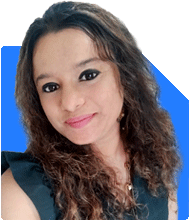I have been investing through SIP in the following fund
Nippon India Growth Fund-1000/-
Mirae Asset Smaller co fund -1500/-
Axis Growth Opportunity Fund -1500/-
Axis Small Cap Fund - 2000/-
BOI Small Cap Fund -2000/-
Quant Small Cap Fund -2000/-
Quant Active Fund - 2000/-
Can Robeco Emerging Equity -2000/-
Invesco India Large and Mid cap -2000/-
PGIM India Mid Cap Opportunity Fund -2000/-
Tata Digital India Fund - 3000/-
DSP Small Cap Fund -1500/-
Parag Parikh Flexicap Fund -2000/-
Bandhan Sterling Value Fund -2000/-
HSBC Business Cycle fund -1000/-
HSBC Large and Midcap-1000/-
Now total value stands at 41 Lakh.
Should I continue to invest in these funds.
Kindly guide with your valued suggestion to make the best out of such funds.
Regards
Ans: First off, kudos on your diligent investment journey so far! Your diversified SIP portfolio and the current value of Rs 41 lakhs is impressive. Let's dive deep into your portfolio and see how we can optimize it for better returns, ensuring you achieve your financial goals.
Understanding Your Current Portfolio
You've spread your investments across various fund categories, primarily focusing on small caps, mid caps, and a few large and mid-cap funds. While diversification is key, it's also important to align your investments with your financial goals, risk tolerance, and investment horizon. Let's evaluate your portfolio step-by-step.
Diversification and Fund Overlap
Diversification helps reduce risk, but too much of it can dilute returns. You have a significant number of small-cap funds. While small caps can offer high growth potential, they also come with high volatility. It's essential to balance this with funds in other categories to manage risk better.
Small-Cap Funds
Your portfolio includes several small-cap funds: Nippon India Growth Fund, Mirae Asset Smaller Companies Fund, Axis Small Cap Fund, BOI Small Cap Fund, Quant Small Cap Fund, and DSP Small Cap Fund. Small-cap funds have high growth potential but also higher risk. Consider reducing the number of small-cap funds to avoid overexposure to this volatile category. You can consolidate to a couple of high-performing small-cap funds instead.
Mid-Cap and Large & Mid-Cap Funds
Funds like PGIM India Mid Cap Opportunity Fund, Canara Robeco Emerging Equities, Invesco India Large and Mid Cap Fund, and HSBC Large and Mid Cap Fund provide a good balance between growth and stability. These funds tend to be less volatile compared to small caps but offer reasonable growth prospects. Retaining a couple of these funds while ensuring they are top performers can be a good strategy.
Flexicap and Value Funds
Parag Parikh Flexicap Fund and Bandhan Sterling Value Fund offer flexibility and value investing opportunities. Flexicap funds invest across market capitalizations, providing a balanced approach, while value funds focus on undervalued stocks, offering potential for decent returns. Maintaining these funds can provide a well-rounded portfolio.
Sectoral and Thematic Funds
You have the Tata Digital India Fund, which is a sectoral/thematic fund focused on the technology sector. These funds can be high-risk, high-reward due to their sector-specific nature. It’s wise to limit exposure to such funds to a smaller portion of your portfolio, as they are more volatile and depend heavily on the performance of the specific sector.
Active vs. Passive Funds
You've opted for actively managed funds. Actively managed funds aim to outperform the market through the expertise of fund managers. While they come with higher expense ratios compared to index funds, they can potentially offer higher returns if managed well. This approach is beneficial as it involves expert guidance, especially when navigating volatile markets.
Direct vs. Regular Funds
Direct funds typically have lower expense ratios compared to regular funds as they don't involve intermediaries. However, regular funds offer the advantage of professional advice from Certified Financial Planners (CFPs). This advice can be crucial for optimizing your portfolio and aligning it with your financial goals. Given your complex portfolio, continuing with regular funds might be beneficial for expert guidance.
Evaluating Fund Performance
It's crucial to periodically review the performance of your funds. Look at their returns over different time horizons, compare them with benchmark indices, and evaluate their consistency. If any fund consistently underperforms its benchmark or peers, consider switching to a better-performing fund.
Aligning with Financial Goals
Your investments should align with your financial goals, whether it's wealth creation, retirement planning, or funding your child's education. Define your goals clearly, and allocate funds accordingly. For instance, if you have long-term goals, you can afford to take on more equity exposure. For short-term goals, consider safer investments.
Risk Management
Understand your risk tolerance and ensure your portfolio aligns with it. Too much exposure to high-risk funds can lead to significant losses during market downturns. A balanced approach with a mix of high-growth and stable funds is advisable. Regularly review and rebalance your portfolio to maintain the desired risk level.
Power of Compounding
One of the biggest advantages of mutual fund investments is the power of compounding. The longer you stay invested, the more your investments grow, as you earn returns not just on your principal amount but also on the accumulated returns. SIPs leverage this by investing systematically and benefiting from rupee cost averaging.
Regular Monitoring and Rebalancing
Investment is not a one-time activity. Regularly monitor your portfolio, at least once a year. Assess the performance, rebalance if necessary, and ensure your portfolio remains aligned with your goals and risk tolerance. This proactive approach helps in navigating market changes and staying on track.
Seeking Expert Advice
While you've done a great job with your investments, consulting with a Certified Financial Planner (CFP) can provide additional insights and strategies tailored to your specific needs. A CFP can help you with detailed portfolio analysis, goal setting, and ongoing financial planning.
Final Insights
To sum up, your current portfolio is diversified, but there is room for optimization. Consider reducing the number of small-cap funds, ensuring you hold top-performing mid-cap and large & mid-cap funds, and balancing your sectoral/thematic exposure. Stay invested for the long term to harness the power of compounding. Regularly review and rebalance your portfolio to align with your financial goals and risk tolerance. And don’t hesitate to seek professional advice for a more tailored approach.
Keep up the good work and continue your disciplined investment journey. It’s great to see such dedication towards securing your financial future.
Best Regards,
K. Ramalingam, MBA, CFP
Chief Financial Planner
www.holisticinvestment.in



























